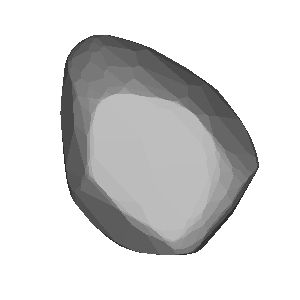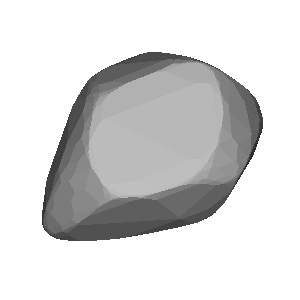2008-04-13 / TYC 1882-00189-1 / (351) Yrsa
| # | OBS | Observer | Occ | Meth. | Instr. | CC | TSRC | UT1 | UT2 | UT3 | UT4 | UT2E | UT3E | Dur. | Chrd |
|---|---|---|---|---|---|---|---|---|---|---|---|---|---|---|---|
| 1 | show | Gregor Krannich | O+ | VIS | M250 | DE | NTP+ | 20:19:00 | 20:20:56.0 | 20:20:57.5 | 20:20:58 | 0.5 | 0.3 | 1.50 | 42.6 |
| 2 | show | Helmut Michels | O+ | VID | M400 | DE | RAD++ | 20:10:00 | 20:20:51.61 | 20:20:53.65 | 20:36:00 | 2.04 | 57.9 | ||
| 3 | show | Bernd Gaehrken | O- | CCD | M800 | DE | 20:19:00 | 20:25:00 | |||||||
| 4 | show | Michael Parl | O- | VID | M203 | DE | 20:18:00 | 20:28:00 | |||||||
| 5 | show | David Voglsam | O- | VID | M500 | AT | 20:20:07 | 20:22:25 | |||||||
| 6 | show | Gerhard Dangl | O- | VID | M254 | AT | 20:18:45 | 20:23:11 | |||||||
| 7 | show | Oliver Kloes | O- | VID | M254 | DE | 20:15:15 | 20:25:00 |
7 observations found in db: euraster
Available (probably) matching predictions (click on the link to switch):| JPL#66 : cecd9296-572c-460f-a078-be03f126aa79 [db: observed] |
Using prediction cecd9296-572c-460f-a078-be03f126aa79 for map and profile fit
| Ellipse and circular profile fits to the timings (chords) |
|---|
|
|
Auto-Fit Result: X0,Y0 = 131.7, -7.2 km Circular diameter = 81 km From 2 chords (VID,VIS) You can enter space separated chord numbers (example: 11 4 8) or a method like VIS to ignore all visual timings, or a time source like RAD and NTP (but not GPS). If the plot disappears, then there are less than 2 chords left (too much ignored, go back with browser). Check SiMDA for size and mass data. Check Johnston Archive for satellites. |
Sky projection (artificial light) for occ. time: 2008-04-13, 20:19 UT (JD = 2454570.347)
| DAMIT | Q | P (h) | λ, β | JD0 | JD-JD0 | φ0 | Version | Modified | Vol-equiv D | Cmnt |
|---|---|---|---|---|---|---|---|---|---|---|
| # 484 | None | 13.312 | 193°, -41° | 2.450699e6 | 3871.3 | 0.0° | None | None | not scaled | 2013-02-11 |
| # 485 | None | 13.312 | 20°, -70° | 2.450699e6 | 3871.3 | 0.0° | None | None | not scaled | 2013-02-11 |


Image size: 300px. Transparent image background for copy & paste
| Map with groundtrack and observer stations |
|---|
| Event Details |
|---|
Occultation UUID [and DB] : cecd9296-572c-460f-a078-be03f126aa79 [observed] Occultation Date + Time : 2008-04-13 at 20:18:37 UT +/- 0.01 min [1] Object Designation : (351) Yrsa Orbit Class : MBA Star Designation : GDR3 3432127199668183808 Star Coordinates (ICRF) : RA = 06 17 56.7286, DE = +26 07 14.093 [2] Star Magnitudes : G = 9.99 mag, RP = 9.24 mag, BP = 10.63 mag Object Magnitude : V = 14.16 mag Estimated Magnitude Drop : 4.2 mag Estimated Max. Duration : 1.4 sec Object Mean Diameter : 40 km (src: astorb) Speed of the shadow : 28.4 km/s Elongation to Moon & Sun : 34° (sunlit = 62%), Sun = 70° Cross-track uncertainty : 1.7 mas = 3 km = 0.08 path-width (1-sig) RUWE and duplicate source : 0.96 mas, dup.src = 0 (0:false, 1:true) Ephemeris Reference : JPL#66 [1] time t0 of closest geocentric approach c/a, [2] including proper motion until t0 |
| More Data and Informations |
|---|
(If error 404: link not valid which means no data available)
| Aladin Sky Atlas |
|---|
| Aladin Lite direct link (has Gaia overlay) |